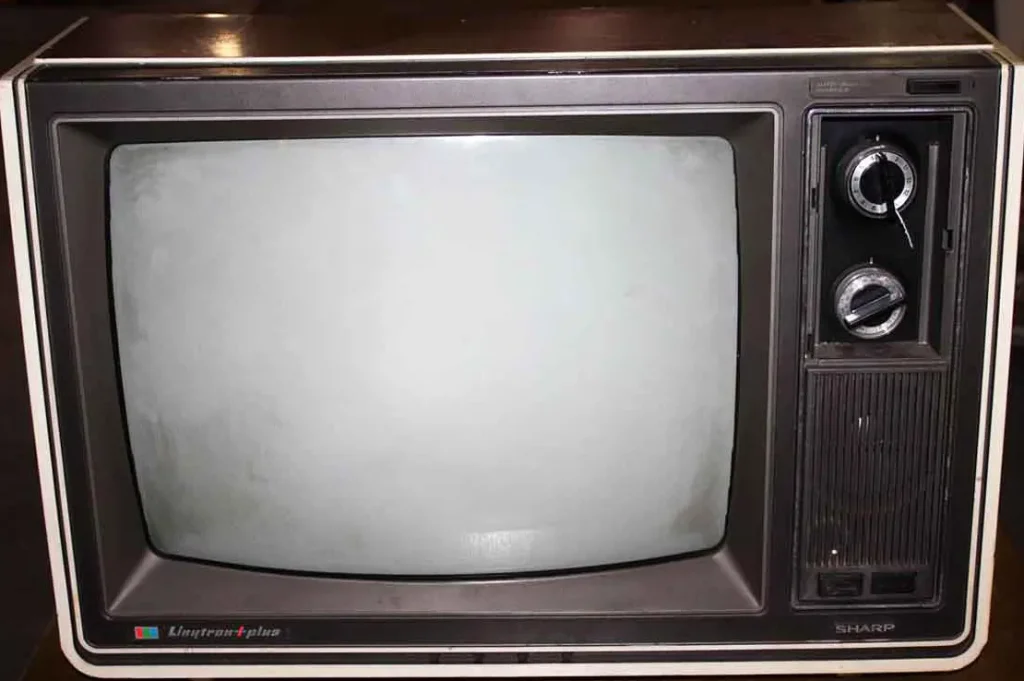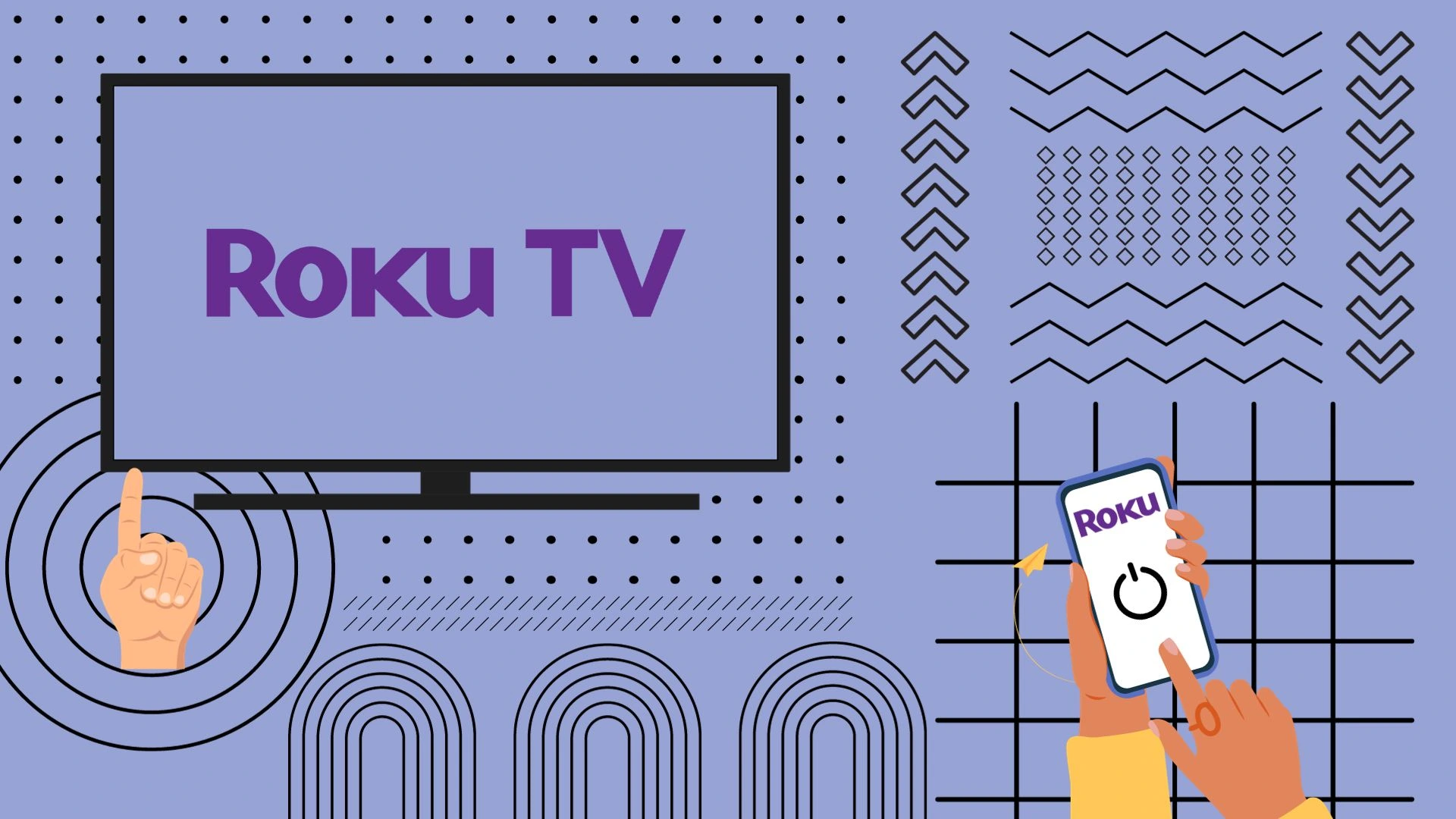Sharp televisions are a well-known Japanese brand, especially between 1980 and 2000. This company was considered one of the leaders in the electronics industry, including televisions. In this article, I will tell you about how the production of Sharp televisions started, the time of greatest prosperity and decline.
The first Sharp television set (1950s)

Sharp Corporation, founded in 1912 in Japan, began manufacturing televisions in the early 1950s. The company’s first television set, the TV3-14T, was introduced in 1953, marking Sharp’s entry into the growing television market. It was the first Japanese television set and was very expensive; to buy one, the average Japanese had to save up for several years.
Transition to color television and market expansion (1960s-1970s)

In the late 1960s and into the 1970s, Sharp began manufacturing color televisions. This era was marked by significant advances in television technology and beyond, the move to color broadcasting and the adoption of large screen formats. For example, Sharp introduced a television equipped with a dual tuner, allowing two channels to be shown simultaneously using picture-in-picture. It was a time of saturation of the TV market, a golden time for TV manufacturers, every family wanted to buy a TV, first black and white and then color.
The peak of Sharp TVs (1980s-1990s)

As a leader in electronics manufacturing, Sharp, along with other Japanese companies, offered new products to the market, such as a hybrid TV and tape recorder and TVs with a built-in VCR. But that was not the main thing: in the early 1990s, the company began developing LCDs for televisions. By the end of the 1990s, Sharp had abandoned the production of CRT TVs, switching completely to LCD TVs. The TVs were given their own brand, Sharp AQUOS TV, to emphasize the special features of Sharp TVs.
The beginning of the decline of Sharp 2000
In the early 2000s, Sharp was the leader in LCD panels and LCD TVs; in 2001, the global market share of LCD TVs manufactured by Sharp was about 80%. In 2003, Sharp also had a significant market share, and in Japan, for example, 60% of TVs sold were made by Sharp. On the back of this success, the company’s management decided to build a huge new LCD panel factory in Japan, abandoning the idea of building in cheaper countries, which ultimately proved to be a mistake. The plant was built in 2006, and by the end of the decade, having invested heavily in new plants, the company ran into problems. AU Optronics, Sony, Samsung, and LG opened similar plants; the LCD market was overcrowded, and because the plants were in Japan, the cost of LCD panels was higher than competitors, plant utilization dropped to 50%, the cost of LCD panels prevented the company from competing in global markets; only 20% of the displays produced were sold overseas. By 2009, Sharp’s share of the global TV market had fallen to 6-7%, and in the same year the company posted its first-ever net loss.
Collapse of Sharp, cessation of TV production

Despite creating high-quality displays and introducing innovative technologies, such as adding a fourth yellow pixel to the standard red, green, and blue (RGB) configuration to improve color accuracy and skin tone reproduction. Sharp is struggling to maintain its position in the market despite the high cost of its LCD panels and TVs. This pricing problem prevented the company from competing effectively, gradually declining its market share. In 2012, the combination of these problems led Sharp to suffer a staggering loss of 5 billion dollars. By 2014, it became apparent that Sharp could not support television production at its current scale, leading to staff cuts.
Recognizing the value of the Sharp TV brand, the company decided to leverage its reputation through licensing agreements. These agreements allowed third-party manufacturers, depending on the region, to produce Sharp-branded televisions. Sharp continued to struggle despite these efforts to capitalize on brand prestige and generate profits. In 2016, to stabilize the company, shareholders decided to sell Sharp; it was sold to Foxconn, which resulted in the relocation of production facilities outside of Japan. Today, Sharp is still owned by Foxconn. Although Sharp-branded televisions are still available on the market, they are manufactured by original equipment manufacturers (OEMs), losing their uniqueness and shifting from the premium segment to the budget segment.
Sharp TVs in Europe after 2014
In Europe, SKYTEC UMC Management s. r. o. acquired the rights to produce TV sets under the Sharp brand, and the company also bought the factory where the TV sets were assembled, which is located in Poland. At first, UMC Management was not able to properly master the production of new TV models. Yes, and Sharp’s (Foxconn) vision of its brand changed. In 2016, Sharp decided to regain control of the Sharp brand for televisions. In 2016, Sharp and UMC entered into an agreement. According to this agreement, a controlling stake in UMC was sold to Sharp. Thus, Sharp regained control of the Sharp brand (TVs) in the European region. But since Sharp’s controlling stake is owned by Foxconn, it was Foxconn that regained control of the Sharp TV brand in Europe. From 2017 to 2021, the production of Sharp TVs in Europe was handled by SKYTEC UMC Management s. r. o. A separate website was created to promote consumer products under the Sharp brand. In 2021, SKYTEC UMC Management s.r.o. was renamed SHARP Consumer Electronics Management s.r.o., and a single website sharpconsumer.com was created for Europe under the Sharp Be Original brand. Components for the televisions are manufactured at Foxconn plants, and the televisions themselves are assembled in Poland.
Sharp TV brand in the United States after 2014
The rights to use the Sharp TV brand, as well as manufacturing facilities in Mexico, were acquired by Hisense, a Chinese electronics company. Hisense began selling Sharp-branded televisions in the U.S. market in 2015. However, Foxconn’s acquisition of Sharp in 2016 marked the beginning of a new chapter of litigation. Sharp (under Foxconn) filed a lawsuit against Hisense, claiming that Sharp-branded TVs manufactured by Hisense were substandard and thus tarnished the brand’s reputation.
The legal standoff with Hisense ended with a settlement agreement in 2019, under which the rights to the Sharp TV brand and related manufacturing facilities in the US were bought back by Sharp from Hisense. The original plan was to restart TV production by the end of 2019. However, the expected relaunch did not take place and Sharp TVs did not reappear in the US market until 2023.
The new Sharp TVs, developed under the Foxconn umbrella, feature operating systems such as Roku OS and Google TV. The focus is on leveraging Foxconn’s capabilities as one of the world’s largest electronics OEMs to produce TVs under various brands, including Sharp.
Sharp branded TVs for Asia after 2014
In the market, Sharp TVs are marketed under the Sharp AQUOS brand as before. Historically, the brand is quite recognizable and the TVs are bought better than in Europe or the US. For Japan and other countries in the region, Sharp has always produced TVs independently, the brand was not licensed. After the company was bought by Foxconn, televisions began to be produced in the parent company’s factories.




